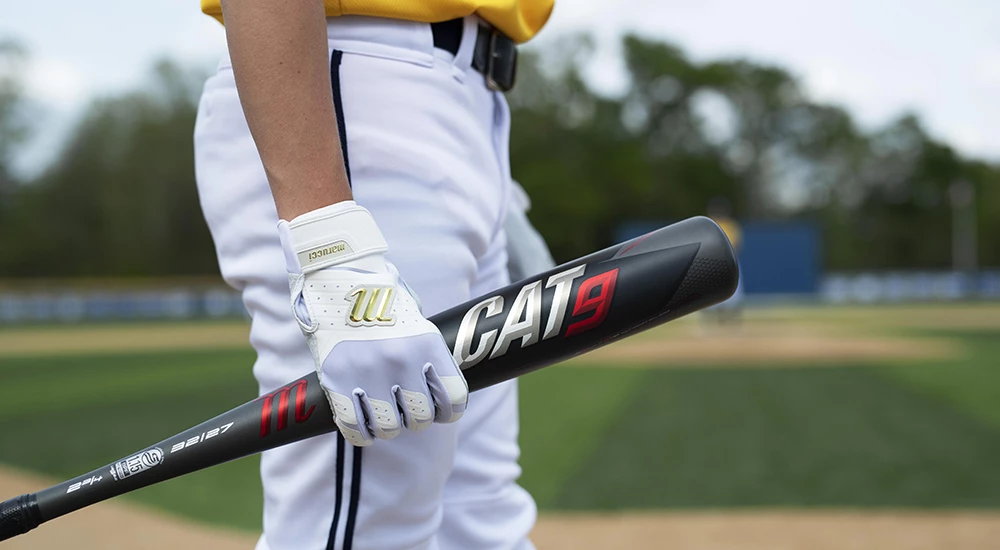Blog
“Choosing the Right Baseball Bat: A Beginner’s Guide”
Selecting the right baseball bat can make all the difference for beginners looking to improve their game. Whether you’re a young player just starting out or an adult getting into the sport, knowing what to look for when choosing a bat can help you hit the ball with confidence and consistency. Here’s a beginner’s guide to help you choose the right baseball bat.
1. Understand Bat Types
First, it’s important to know the different types of bats available. There are two main categories:
- Wooden Bats: Typically used by professional players, these bats are known for their traditional feel and durability. While they can be more challenging to use for beginners due to their heavier weight and less forgiving sweet spot, they provide a genuine batting experience.
- Metal Bats: These are popular among youth and amateur leagues due to their lighter weight and larger sweet spot. They are usually made of aluminum or composite materials and are easier to handle for players new to the sport.
Tip: Beginners often start with metal bats for better control and easier swings.
2. Choose the Right Material
If you opt for a metal bat, you’ll need to decide on the material:

- Aluminum Bats: They are lightweight and provide a quick swing speed, making them ideal for beginners. Aluminum bats are durable, but they can dent over time.
- Composite Bats: These are made from a mix of carbon fiber, graphite, or other materials. They are more expensive but offer better power and a larger sweet spot. Composite bats can also have a softer feel, which reduces vibration upon impact.
- Hybrid Bats: These bats combine an aluminum barrel with a composite handle, offering a balance between power and control.
Tip: For beginners, an aluminum bat is often a good starting point due to its affordability and ease of use.
3. Determine the Right Length and Weight
Choosing the correct length and weight is crucial for developing proper batting form:
- Length: The right bat length depends on your height and age. A longer bat offers more reach, while a shorter bat provides better control. The general rule is to have the end of the bat reach around your hip or slightly above.
- Weight: The weight of the bat impacts your swing speed. A heavier bat provides more power but can be harder to control, while a lighter bat is easier to handle but may not generate as much power. Many beginners opt for a bat with a drop weight (the difference between the length and weight) between -10 and -12.
Tip: Try different bat lengths and weights to see what feels most comfortable for you.
4. Know the Bat’s Barrel Size
The barrel size refers to the diameter of the bat’s hitting surface. A larger barrel allows for a bigger sweet spot, which means more chances to make solid contact with the ball:
- Standard Barrel: Generally 2.5 inches in diameter and suitable for most beginners.
- Big Barrel: Typically around 2.75 inches, it provides more surface area but can be heavier and harder to control.
Tip: Start with a standard barrel and move up to a bigger barrel as you gain confidence and strength.
5. Check League Regulations
Different leagues have specific rules for bats, especially when it comes to material, length, and weight. Make sure to check with your league to ensure your bat meets the required regulations. For example, some leagues only allow aluminum or composite bats, while others permit wooden bats.
Tip: Verify with your league or team before purchasing to avoid any issues with compliance.

6. Consider the Grip
A comfortable grip is essential for controlling the bat and reducing vibration. Look for bats with ergonomic, cushioned grips that help minimize hand fatigue. Some grips come with a tacky texture or are designed to absorb shock, which can be beneficial for beginners.
Tip: Consider adding a bat grip or tape to customize the feel and comfort to your liking.
7. Test Before You Buy
If possible, try out different bats at a store or practice facility. Swinging a bat before you purchase it will give you a better sense of its weight, balance, and overall feel. Many sporting goods stores have demo models that you can test.
Tip: Bring your gloves and swing the bat a few times to see if it feels natural in your hands.
Choosing the right baseball bat as a beginner involves understanding the different types, materials, and sizes to find what works best for your playing style and comfort. Start with a lightweight, metal bat with a comfortable grip and a standard barrel size to build confidence and improve your batting skills. By keeping these tips in mind, you’ll be well on your way to making solid hits and enjoying the game.


